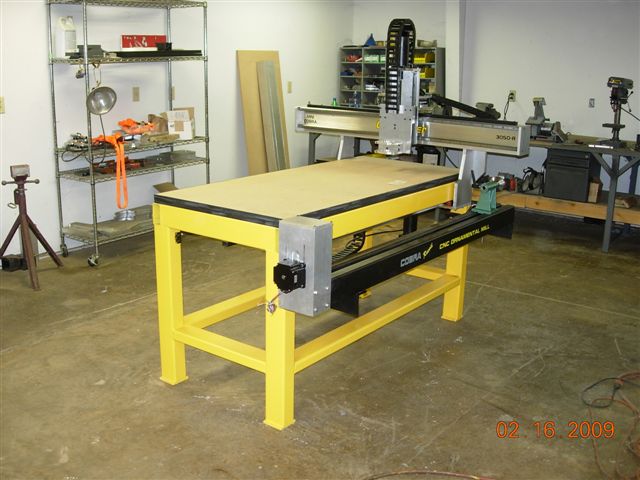Troubleshooting a Loss of Vacuum
First you need to figure out whether the problem is the pump, or some other issue. July 8, 2014
Question
I have a Routech 220 with a vacuum table. Recently I was working on a ten sheet project and after the first sheet, which maintained vacuum and machined perfectly, I loaded another sheet onto the machine and when I lowered the locating pins the vacuum didn't engage. The pump was still running and it didn't sound appreciably different, but the gauge on the table read zero. I am not sure if the pump is faulty or the solenoid which engages the vacuum when I hit the locator pin up and down switch is actuating. The pump in question is a Becker VTLF 250. I don't know what the pump would sound like if the graphite vanes have broken and if the symptom would be immediate lack of vacuum. The pump spins fairly smoothly, but I can hear a little bit of rattling as it spins down when spun by hand. Can anybody offer me any insight regarding troubleshooting?
Forum Responses
(CNC Forum)
From contributor S:
The same thing happened to my pump a couple of months ago. It was the vanes. I have a different pump but I was able to see the dust when I took apart the section where it exhausts. I then had to replace the vanes.
From the original questioner
I will check my exhaust tomorrow. Did you replace your vanes yourself?
From Contributor S
I replaced the vanes myself. You do have to check the walls of the cylinder. If they are rippled you should have the cylinder honed.
From Contributor A:
One way to tell for sure if it is your pump is to disconnect your vac line at the pump. Put a small board over the pump intake and turn the pump on. If the pump creates enough vacuum to keep the board over the intake, it probably isn't a problem with your pump. We've had the same issue in the past and the best way to diagnose the problem is to start at the pump, checking every joint in this manner, as well as the rigid and flexible lines, all the way up to the table.
From the original questioner
Good suggestion Contributor A – we tried this. The board stuck to the intake but could be removed quite easily. I am thinking the board would be immovable if the pump was working properly.
From contributor M:
I would say it's not the pump. You need to look at the coil valve that in turn moves a ball valve or piston valve to activate your vacuum. If you have zero on the vacuum gauge then why does the panel suck to the hose? You will be able to easily remove the board from the hose because it's not a perfect seal. You at least need to take a look at both the coil valve as well as the valve that opens the vacuum. Rotating by hand and hearing the veins slide down the rotor is normal. Sometimes broken veins will lock up the pump if trying to spin by hand. All signs point to the coil valve.
From the original questioner
To contributor M: If I am understanding you correctly, the ball/piston valve is the automated valve that my CNC controller activates when I lower the pins and actuate the vacuum? I can check the ball/piston valve fairly easily because I can see where it is on the side of my control panel. Would the coil valve you are referring to be the electronic solenoid coil which magnetically actuates the ball/piston valve?
From the original questioner
To contributor M: You were correct in that the pump was not faulty. Closer investigation revealed that the rope gasket between the vacuum table and the spoilboard was not creating a suitable seal. With some repositioning we were able to achieve adequate suction to finish the project. I am ordering new rope gasket today. The gasket material had been in place for about six years. Replacement was probably overdue.
